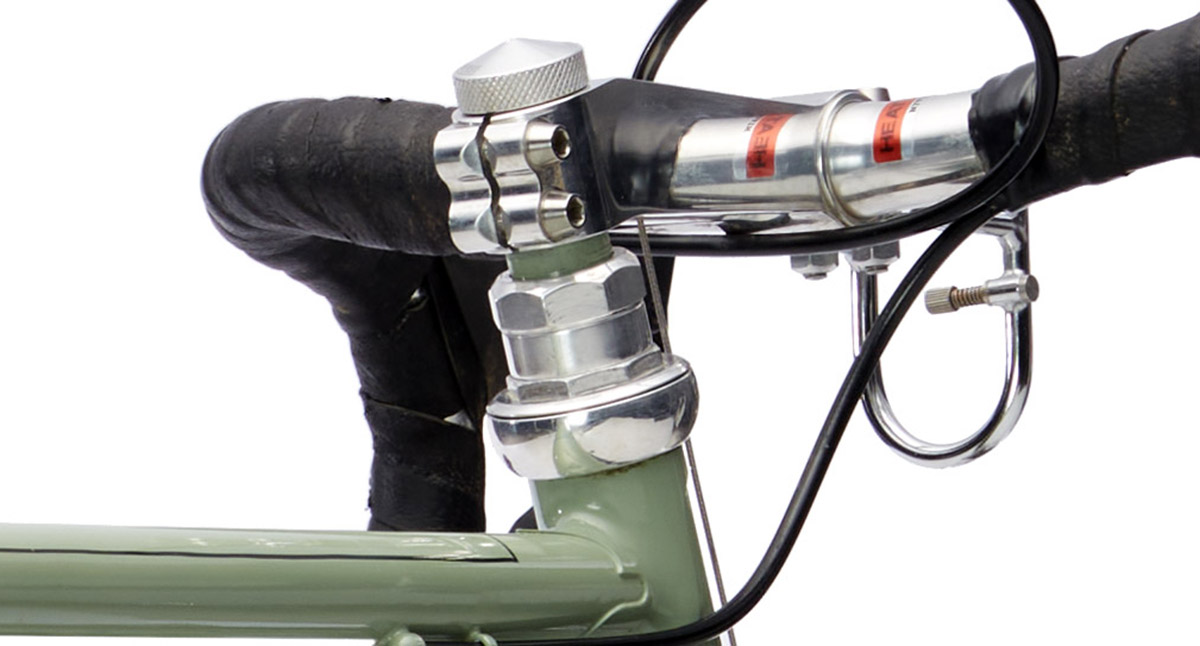Introducing Rene Herse Headsets
Headsets are among those bike parts that you don’t think about much—until you have to, because they aren’t working as they should. Fortunately, the headsets on modern carbon bikes rarely intrude into the cycling experience—massive, tapered steerers spread the load over much bigger bearings than in the past.
For steel bikes, oversized and tapered steerers bring massive weight, so a slender 1″ steerer tubes are still the best option. The good news: The issues with classic headsets can be resolved with good engineering and precision manufacturing.
What are those issues anyhow? Cup-and-cone headsets with ball bearings tend to index, especially if the ends of the frame’s head tube aren’t perfectly parallel. When your headset is notchy, you suddenly notice how tiny your instinctive steering movements are—but now you can only steer in distinct steps. Not much fun! Cartridge bearing headsets usually don’t index, but they don’t have much preload, which contributes to another problem: shimmy. When your handlebars turn into a blur, it can be scary. The best remedy is to relax your grip on the bars and press a knee against the top tube, in the hopes that this will attenuate the resonance that causes the frame and fork to oscillate around the steering axis. Not something you want to do on a regular basis.
Needle bearing headsets used to be the ‘secret upgrade’ to any bike. I discovered them as a young rider when my beautifully made Campagnolo headset started indexing after just a few months of racing. A friend gave me a used Stronglight A9 with needle bearings, pulled from an old Peugeot in the shop where he worked. At the time, I didn’t know the difference between French and British threading, and I wondered why metal shavings came out of the top cup and locknut as I tightened them. But that headset lasted for 10 years and more than 70,000 miles of hard riding and racing on narrow, high-pressure tires—tough conditions for any headset.
Stronglight stopped making the needle-bearing A9 and its cousins many, many years ago, and old stocks have been hard to come by. When we discovered Rinko, we found that existing needle bearing headsets weren’t ideal, as the bearings tend to fall out when you remove the fork and pack your bike for travel. I ran a Chris King on my Mule for a while. It was great for Rinko, and on a perfectly aligned frame with an oversized down tube, shimmy happened only rarely, but I ran into trouble with the lighting: The anodizing on the headset interrupted the return flow of the current from the taillight to the generator hub. I removed one headset cup and sanded off the anodizing, but this didn’t help: The anodizing on the inside, between bearing and cup, still interrupted the current flow. I tried a Token needle-bearing headset that looked great on paper, but the needle bearings were so small that they fell out of the retainer when the steerer flexed during hard braking. It’s not much fun when suddenly your bars turn only with great reluctance because small needle bearings are scattered in the space between steerer and head tube.
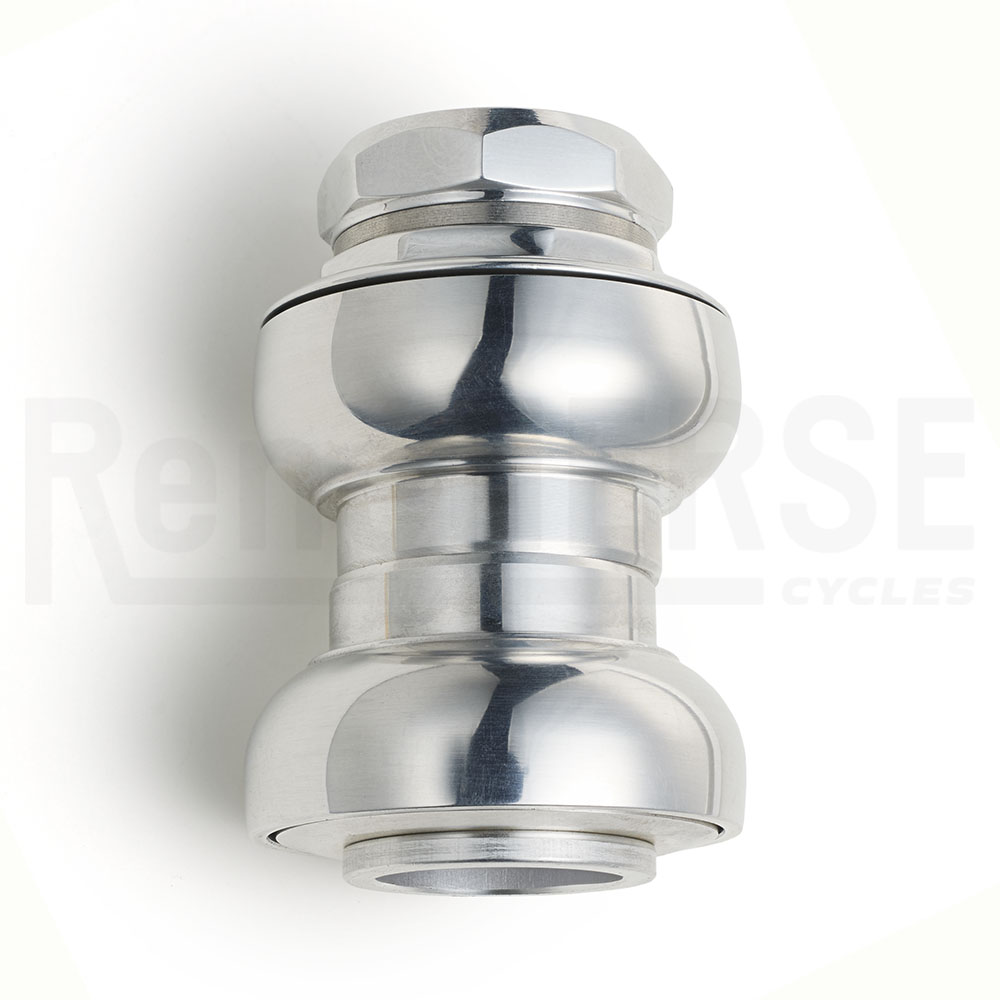
For our anniversary run of Rene Herse bikes—and for the bikes we ride in long-distance events—we wanted a better solution: a reliable needle-bearing headset that is Rinko-compatible. This is another project that had a long gestation period: We made the first prototypes three years ago. We ran them in Unbound XL (twice), in Paris-Brest-Paris, Arkansas High Country Race, Dark Divide 300 and many other rides and adventures. Along the way, we fine-tuned many details, both aesthetic and functional. We decreased stack height, lowered weight, and increased clearances to make sure the headset works smoothly and quietly under the harshest conditions. We tested and re-tested, and now the headsets are ready.
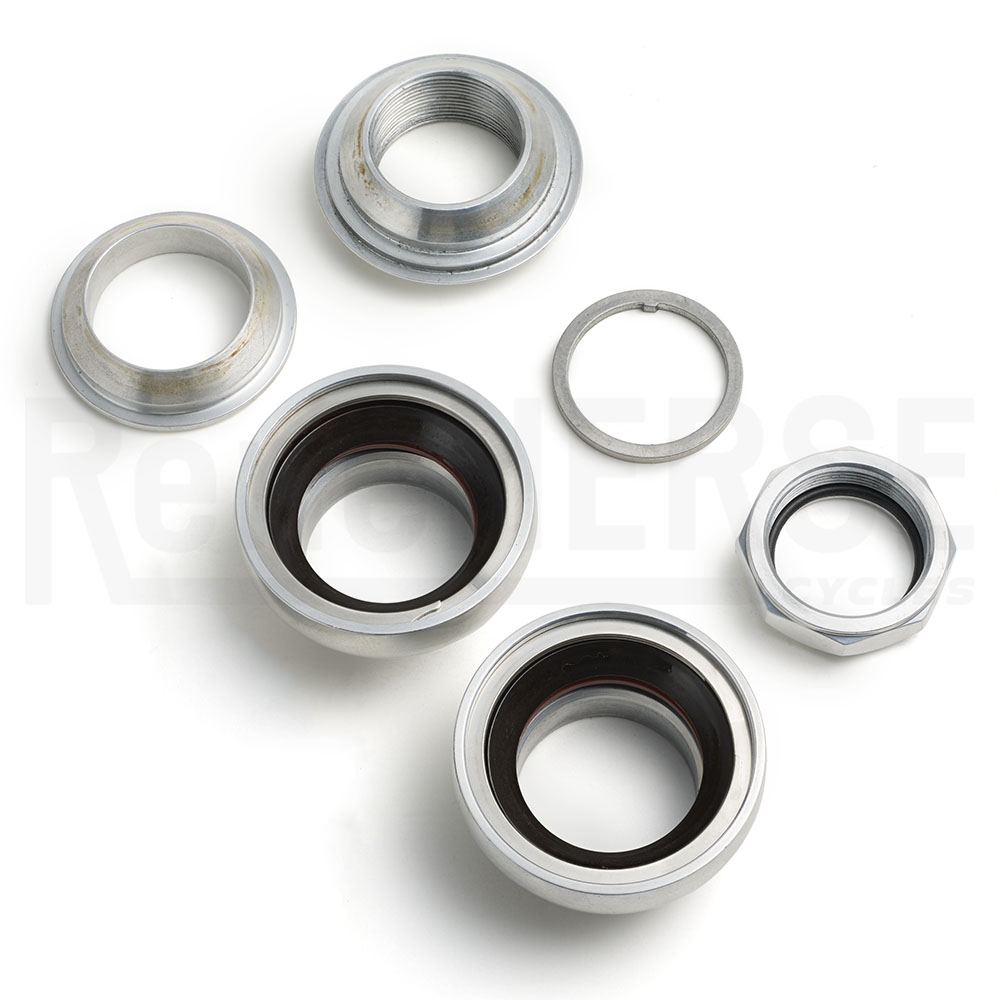
Here is how it works: Circlip retainers hold the bearings in place. They don’t come out when you remove the fork, but they are easy to remove if you want to clean and grease the bearings. Top and bottom bearings are oriented in opposite directions to ensure perfect alignment under hard braking.
At the top, there’s a standard locknut, so you can use headset spacers and/or cable hangers. The cups and locknut are made from aluminum for light weight, but the washer is made from steel so the tab doesn’t get ground down by the steerer tube. If you want to make sure your headset doesn’t come loose, we recommend filing the back of the steerer tube flat and using one of our Threaded Headset Spacers. With that, you only need to tighten the locknut with moderate torque, yet it won’t come loose, even on rough terrain—we’ve tested these headsets under race conditions at Unbound XL and the Arkansas High Country Race, with zero problems.
The headset is not anodized, so it’s easy to polish and won’t look unsightly if cable housing rubs against it. Just as importantly, the headset parts conduct electricity, if necessary, for your lighting system. There are no logos, because we feel that headsets shouldn’t call attention to themselves. The Rene Herse 1″ Rinko Headset weighs 119 g and retails for $ 209.
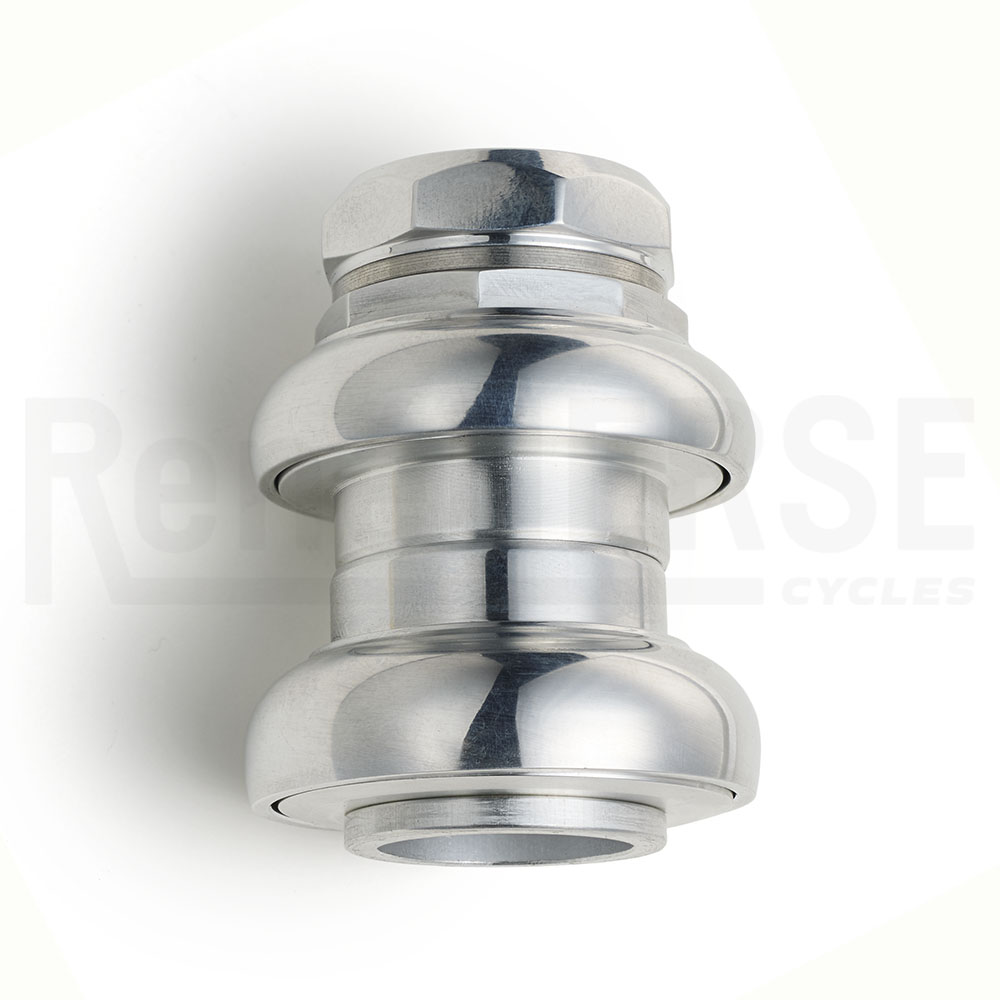
The Rinko headset, with its opposed bearings and circlip retainers, has a relatively tall stack height (46.7 mm). That’s not an issue if you are building a new bike, but the Rinko headset won’t always work as a replacement for worn-out headsets on old bikes. For those situations, we’ve developed a Low-Stack version (above), with a stack height of just 38.0 mm. (For comparison, a 1970s Campagnolo Super Record headset has a stack height of 40 mm.)
How do you measure stack height? It’s the extra length of your fork’s steerer tube compared to the head tube—the space that’s reserved for the parts of the headset. Stack height does not include the last few millimeters of the headset top nut that extend beyond the top of the steerer tube, so it’s about 3-5 mm less than the total height of the headset—depending on whether there is a rubber O-ring in the locknut or not. (You also deduct the parts that fit inside the bike’s head tube.)
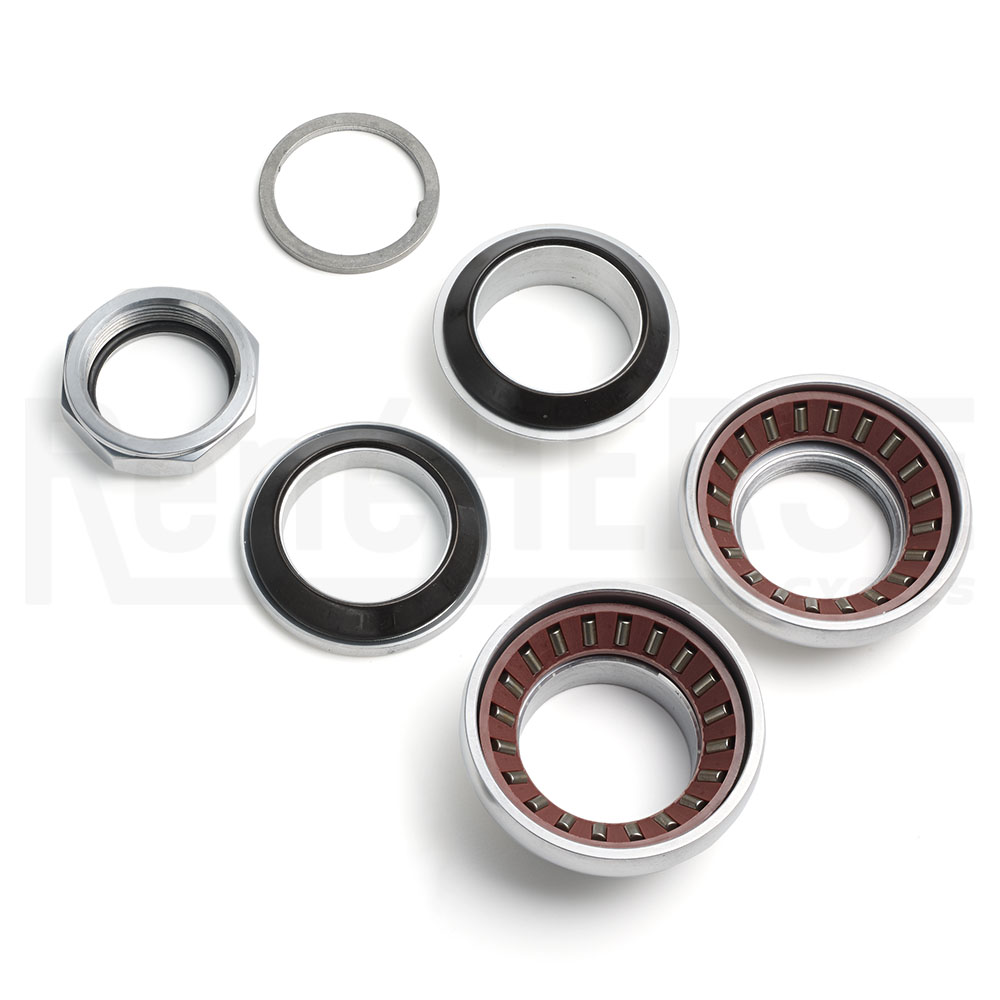
The Low Stack Headset has the same technology as the Rinko Headset, except the bearings are both oriented the same way, and aren’t held in place with circlips. That means the stack height is ultra-low at 38.0 mm. And if your steerer is really short, you can remove the washer to save another 2 mm. The headset weighs just 96 g, making it one of the lightest headsets available today.
If you’ve got a bike with a worn headset, install one of these, and it’ll last as long as the bike—and then you’ll probably swap it to another bike, as with my old Stronglight. We’ll offer replacement bearings, but you’ll never need them—they simply don’t wear out. We figure somebody might lose the bearings, so we’ll make them available soon. The Rene Herse 1″ Low-Stack Headset retails for $ 189.
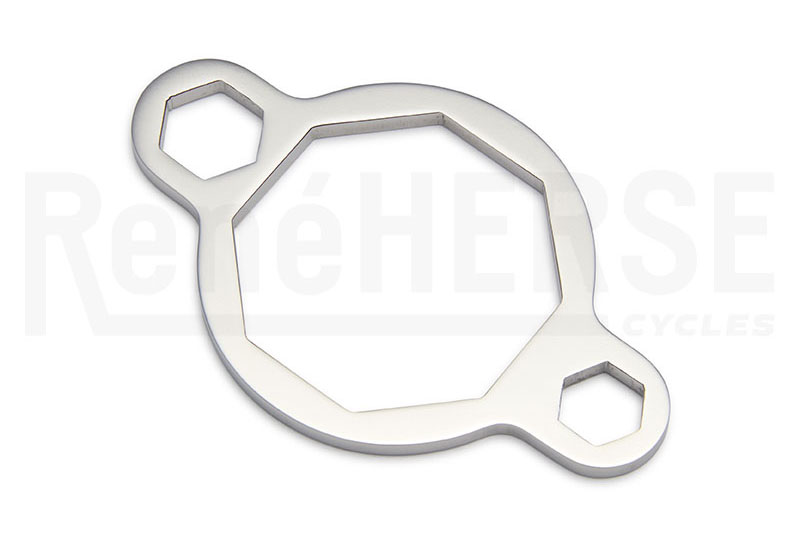
Our new Rinko headset wrench works for all 1″ headsets, not just the new Rene Herse headsets. We used to source a similar wrench from a craftsman in Japan who machined them in small batches, but he retired and stopped making them. The new version is made from stainless steel for extra durability, and is even lighter at just 14 grams. The two ‘ears’ allow turning it by hand to tighten your headset, and they include 8 and 10 mm sockets. If your headset locknut is really tight, you can insert an 8 mm Allen wrench (as used on most modern pedals) for added leverage. The Rinko Headset Wrench is a fun tool that you’ll want to carry on every ride if you are running traditional headset. It retails for $ 24.
Headsets and Rinko wrench are in stock now. Quantities are limited. They are made in small batches, and it may take a while until supply catches up with demand.
More information:
- Headsets in the Rene Herse program
- A post about the flat-backed Rene Herse headset spacers and how they work


